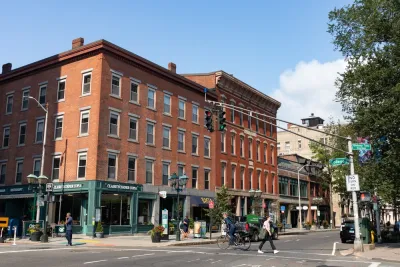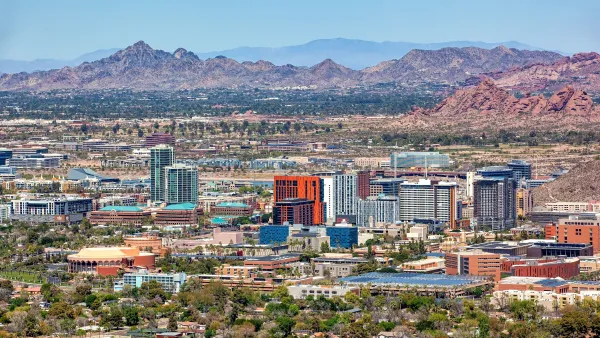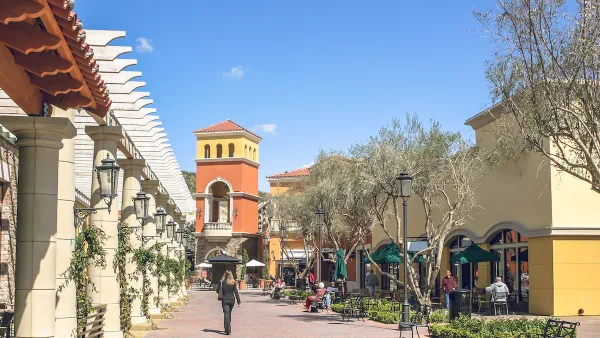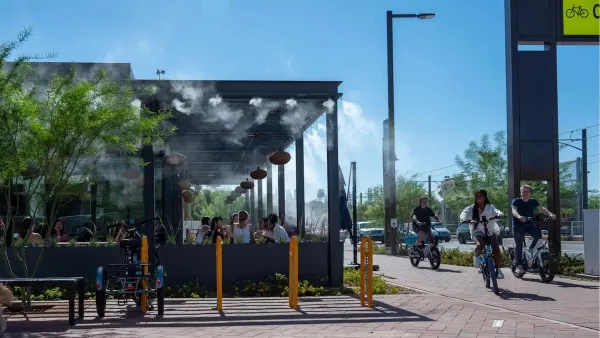Despite recent claims to the contrary, the concept of the 15-minute city promotes freedom of mobility and universal access to a city’s resources and amenities.

Proving the old adage that when all you have is a hammer everything looks like a nail, conspiracy theorists have descended on the 15-minute city concept as the latest target of alt-right paranoia. Having discovered the concept earlier this year, some conspiracists are claiming that 15-minute city policies will implement mandatory restrictions on movement and take away personal freedoms.
They won’t.
Writing in The Washington Post, Lara Williams describes how the theories took hold, starting with an uproar over an innocuous plan to improve pedestrian facilities and reduce the need for car trips proposed in Oxford, England.
Mix high levels of distrust in governments and institutions with pandemic lockdowns, an underlying conspiracy theory about a “new world order” and an urban planning concept backed by an international network of mayors, and garnish with a toxic car culture. Marinate on the internet, and voila! You now have a lot of people primed to believe that local councils are going to imprison them in 15-minute zones.
Sander van der Linden, author of Foolproof: Why We Fall for Misinformation and How to Build Immunity, suggests that the best way to prevent the spread of these theories is to preempt misinterpretations and train people to recognize manipulation techniques employed by promoters of conspiracy theories. To recap: the 15-minute city is a guiding principle toward reducing the need for car trips and improving public health and public spaces. “It’s really quite wholesome, rooted in making humans and the planet happier.”
FULL STORY: No, 15-Minute Cities Aren’t a Threat to Civil Liberties

National Parks Layoffs Will Cause Communities to Lose Billions
Thousands of essential park workers were laid off this week, just before the busy spring break season.

Retro-silient?: America’s First “Eco-burb,” The Woodlands Turns 50
A master-planned community north of Houston offers lessons on green infrastructure and resilient design, but falls short of its founder’s lofty affordability and walkability goals.

Delivering for America Plan Will Downgrade Mail Service in at Least 49.5 Percent of Zip Codes
Republican and Democrat lawmakers criticize the plan for its disproportionate negative impact on rural communities.

Test News Post 1
This is a summary

Test News Headline 46
Test for the image on the front page.

Balancing Bombs and Butterflies: How the National Guard Protects a Rare Species
The National Guard at Fort Indiantown Gap uses GIS technology and land management strategies to balance military training with conservation efforts, ensuring the survival of the rare eastern regal fritillary butterfly.
Urban Design for Planners 1: Software Tools
This six-course series explores essential urban design concepts using open source software and equips planners with the tools they need to participate fully in the urban design process.
Planning for Universal Design
Learn the tools for implementing Universal Design in planning regulations.
EMC Planning Group, Inc.
Planetizen
Planetizen
Mpact (formerly Rail~Volution)
Great Falls Development Authority, Inc.
HUDs Office of Policy Development and Research
NYU Wagner Graduate School of Public Service





























